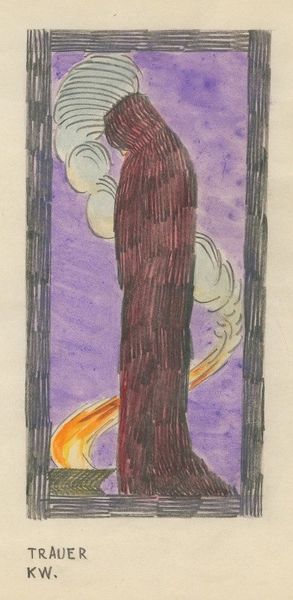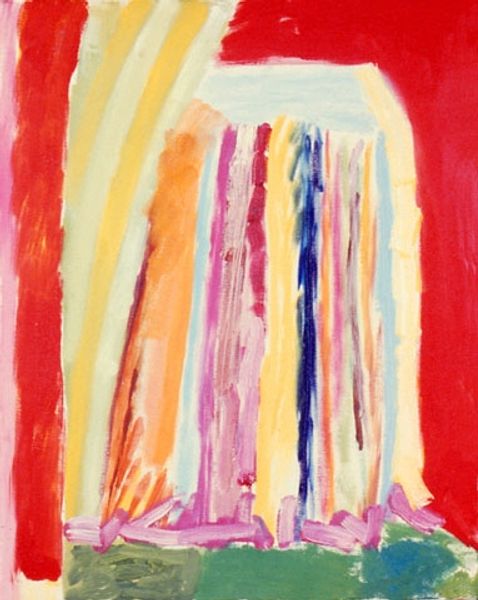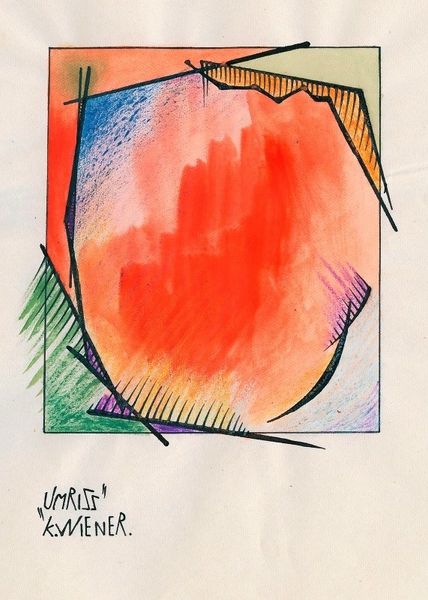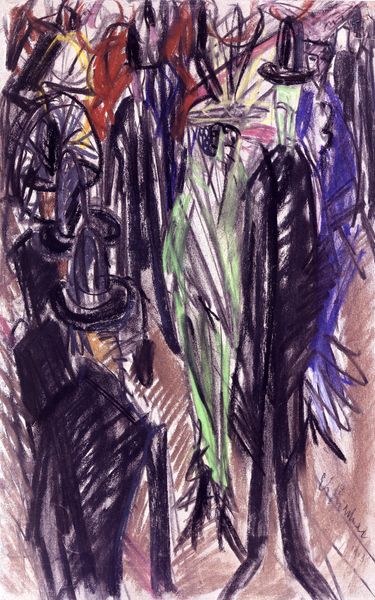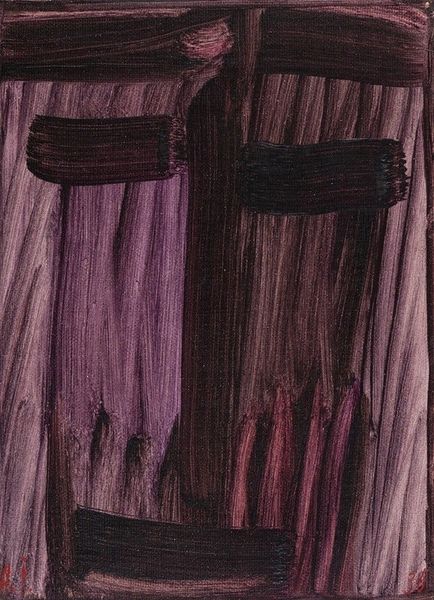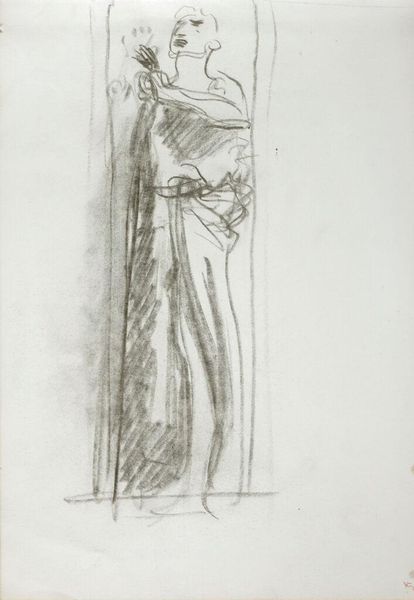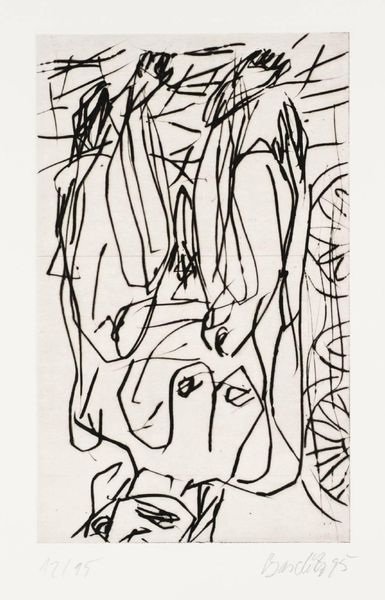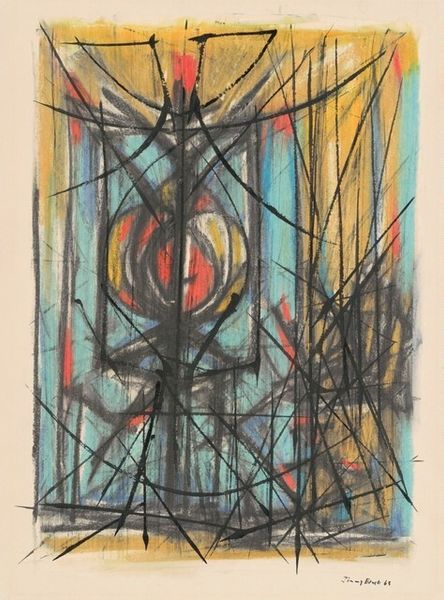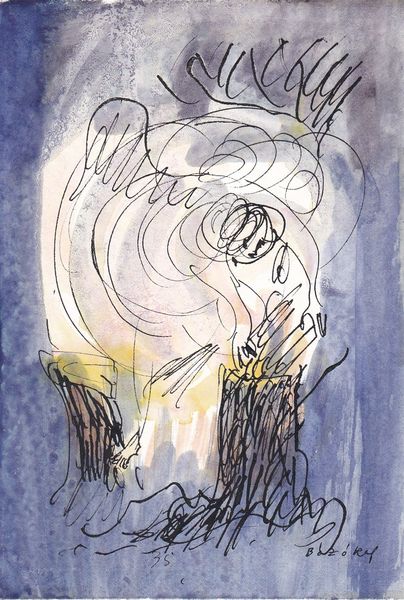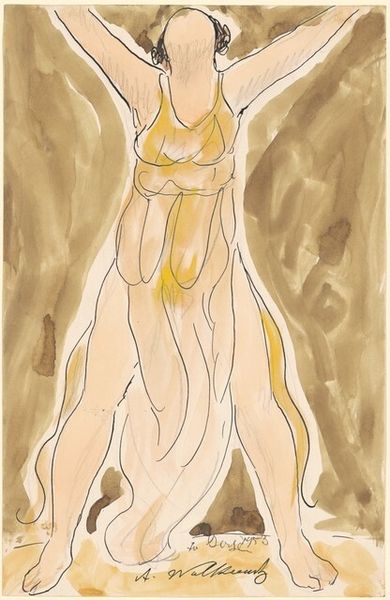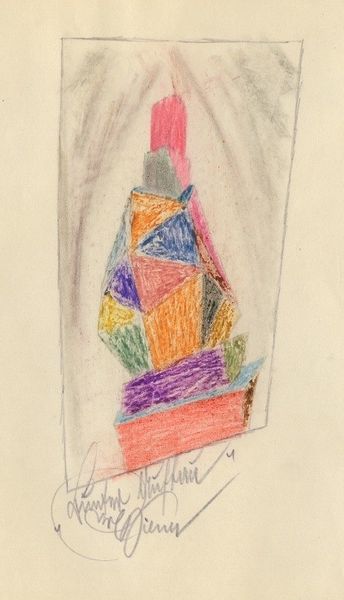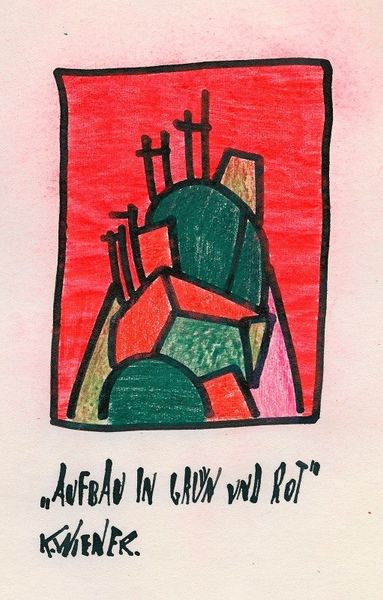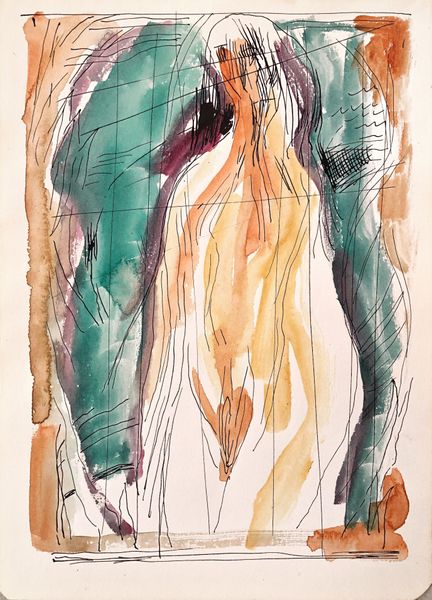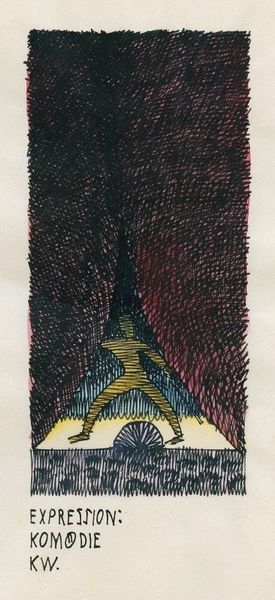
drawing, coloured-pencil
#
drawing
#
coloured-pencil
#
figuration
#
abstract
#
expressionism
Copyright: Public Domain: Artvee
Editor: This is "Traumgespenst," or "Dream Spectre," a colored-pencil drawing from around 1923 by Karl Wiener. It’s… unsettling. The figure seems trapped, vulnerable almost, within its bright, harsh colors. What strikes you about it? Curator: What strikes me is how this work speaks to the socio-political anxieties of its time. Consider the context: post-World War I Germany. Expressionism, as a style, captured the raw emotions of a generation scarred by war. Doesn't the figure’s confinement within that brightly colored, almost aggressively delineated, rectangular space suggest a broader societal feeling of being boxed in, or perhaps, haunted? Editor: Haunted by what, exactly? Curator: By the trauma of the war, certainly. But also by the failures of the old order. Expressionism often served as a vehicle for critiquing established social structures and power dynamics. This "Dream Spectre," rendered in such a childlike, almost crude style, seems to be a critique of authority figures, made impotent through dream. The visible patches suggest also a kind of poverty or lack of material and societal security, too. Don’t you think? Editor: That's insightful, I hadn't considered it as commentary on authority. I was mostly seeing individual anxiety and vulnerability. So the medium itself, colored pencil, part of that critique, as well, implying childish or something that doesn't belong to 'high' art. Curator: Precisely. By embracing this ‘lesser’ medium, artists like Wiener were rebelling against academic traditions and making art more accessible, both in production and consumption, engaging with a broader public. It democratizes the aesthetic experience. How does knowing that shift your initial perception? Editor: It really adds another layer, making me consider how the art world itself was changing and the statement the artist was trying to make within it. Thank you for your historical insights. Curator: And thank you. Thinking about its historical context encouraged a more critical awareness.
Comments
No comments
Be the first to comment and join the conversation on the ultimate creative platform.
